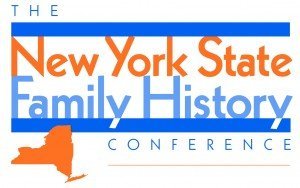 Now that the news has trickled down that the New York Genealogical and Biographical Society, popularly known as the “G & B,” has given its enormous genealogical collection (75,000 volumes, 30,000 manuscripts and 22,000 reels of microfilm) to the New York Public Library – I thought we’d take a look at the fall out.
Now that the news has trickled down that the New York Genealogical and Biographical Society, popularly known as the “G & B,” has given its enormous genealogical collection (75,000 volumes, 30,000 manuscripts and 22,000 reels of microfilm) to the New York Public Library – I thought we’d take a look at the fall out.
First a recap of the news from the New York Times:
Faced with a dwindling endowment, the members-only G & B, as it is known, sold its four-story building on East 58th Street in Midtown Manhattan last year for $24 million. It bought an office condominium in Midtown where it will now focus on grant-giving, tours, lectures and other means of encouraging genealogical research. One of the first grants was about $1 million to the library for a four-person staff to process and catalog the G & B collection within two years.
The heaviest criticism comes from members themselves. Dick Hillenbrand of the Upstate New York Genealogy Blog has been following the struggle inside the G & B for over a year. Members posting to the blog decried last year what they called a plan to “disenfranchise all members of the NYG&BS and absolutely and forever empower a board of 15 to unilaterally make decisions about the NYG&B’s assets and future.” They were apparently right about that.
Hillibrand’s latest post laid out some of the opposition positions:
Looks like the present total membership of the G&B of 15 members, made an unrecoverable decision. If you are a former member and donated your time, money, effort, books and manuscripts to the G&B because you thought that they would be there forever, guess what? When you voted your rights away and became former members it was all over.
The statements that we were told about moving the society to new quarters to be able to keep the collection available to all former members, well would you consider those as untruths? . You will never be able to roam through the open stacks of your old friends. At the NYPL you must fill out a call slip of the book you want and wait for a runner to bring it to you. You will never again have the pleasure of finding the rarity treasure sitting on the shelf right near the item you were interested in.
The official blog of Genealogy Bank, took no position, but had this context to add:
The NYPL’s genealogy collection – more formally called: The Irma and Paul Milstein Division of United States History, Local History and Genealogy has long been known for its strong collection of research materials gathered for over a century – from the founding of the NYPL in 1848.
When I first began using the NYPL in the 1960s it was administered by Gerald D. McDonald who served from 1945-1969 and then by Gunther Pohl (1969-1985) and John Miller (1985-1987). The Division is currently under the capable leadership of Ruth Carr long serving Chief of that Division.
Randy Seaver, blogging at Genea-Musings said: “I welcome this move since it brings records out of the ‘-members only’ repository into a public repository. Of course, I wasn’t an NYG&BS member and I don’t have an emotional attachment to NYG&BS or NYPL.” He also called on the NYPL to:
1 – Put the NYG&BS catalog on their web site – either as part of the current NYPL catalog or as a separate catalog until the NYG&BS material can be integrated into the NYPL catalog. That way, researchers in the genealogy world can identify records of interest to be searched.
2 – Digitize as many unique records as possible and make them publicly available on a web site, subject to copyright restrictions.
3 – As NYPL catalogs and/or digitizes the NYG&BS collection, index the names in the manuscript and/or estate papers collections? The records that nobody knows what’s in them. If they can’t or won’t do that, would they please request volunteers to do it with them or for them?
Schelly Talalay Dardashti at Tracing the Tribe: The Jewish Genealogy Blog condensed the NY Times historical context:
G&B was founded in 1869 and moved into the recently sold building in 1929. Early members were interested in 17th-18th century Dutch and English roots. Holdings include censuses, deeds, baptisms, births, deaths and wills. However, after WWII, the group had almost disappeared with members conflicted about its direction, despite the increasing popularity of genealogy following the major impact of “Roots,” Ellis Island’s restoration and database, and commercial websites devoted to family history.
Here is the press release from the NYPL.
 The Central New York Genealogical Society and the New York Genealogical and Biographical Society are cosponsoring what they are calling “the first-ever statewide genealogical conference in New York.”
The Central New York Genealogical Society and the New York Genealogical and Biographical Society are cosponsoring what they are calling “the first-ever statewide genealogical conference in New York.”

